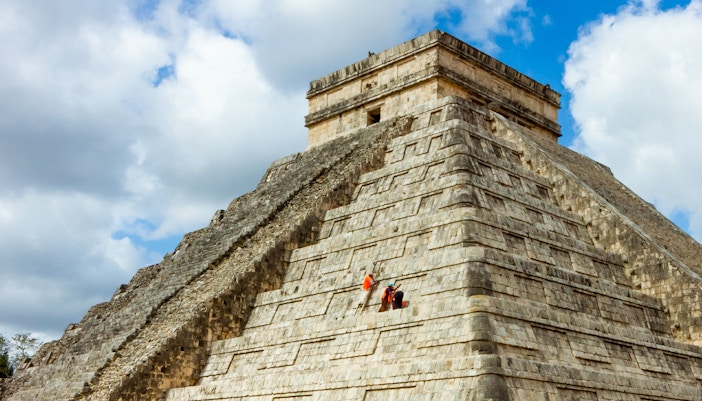Construction and architecture of Chichén Itzá
Chichén Itzá’s early buildings follow classic Maya styles with stepped pyramids, ceremonial platforms, and simple plazas, designed for rituals and community gatherings.
By the city’s peak, Toltec influences became prominent, visible in detailed stone carvings, feathered serpent motifs, and the imposing Temple of the Warriors. The Temple of Kukulkan (El Castillo) exemplified mathematical and astronomical precision, aligning perfectly with solar events like the equinox, when shadows form the illusion of a serpent descending the pyramid.
Large ball courts, such as the Great Ball Court, feature intricately carved walls that narrate myths, honor gods, and display the power of the city’s elite.









